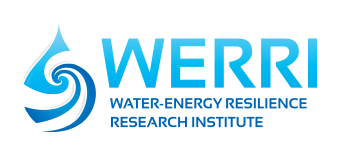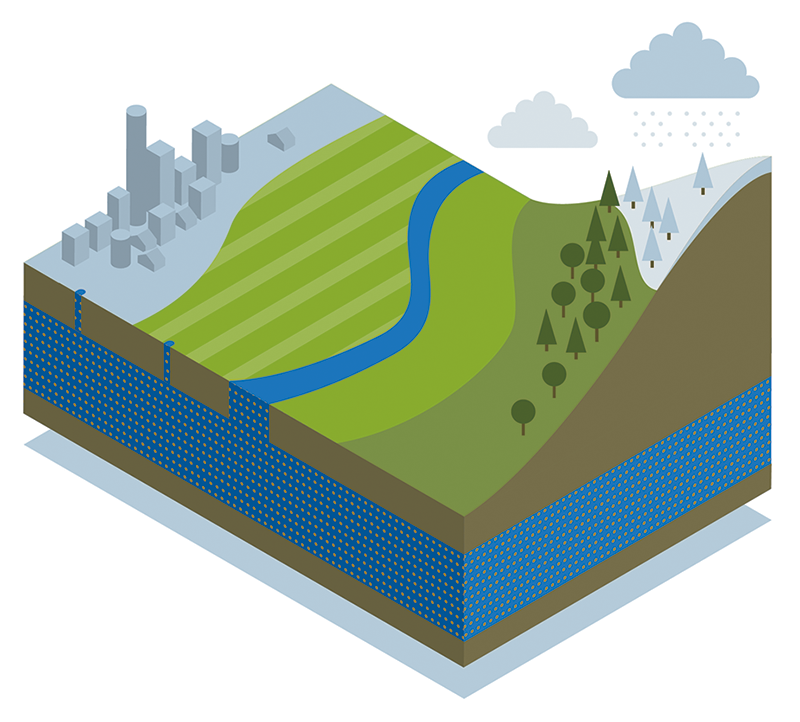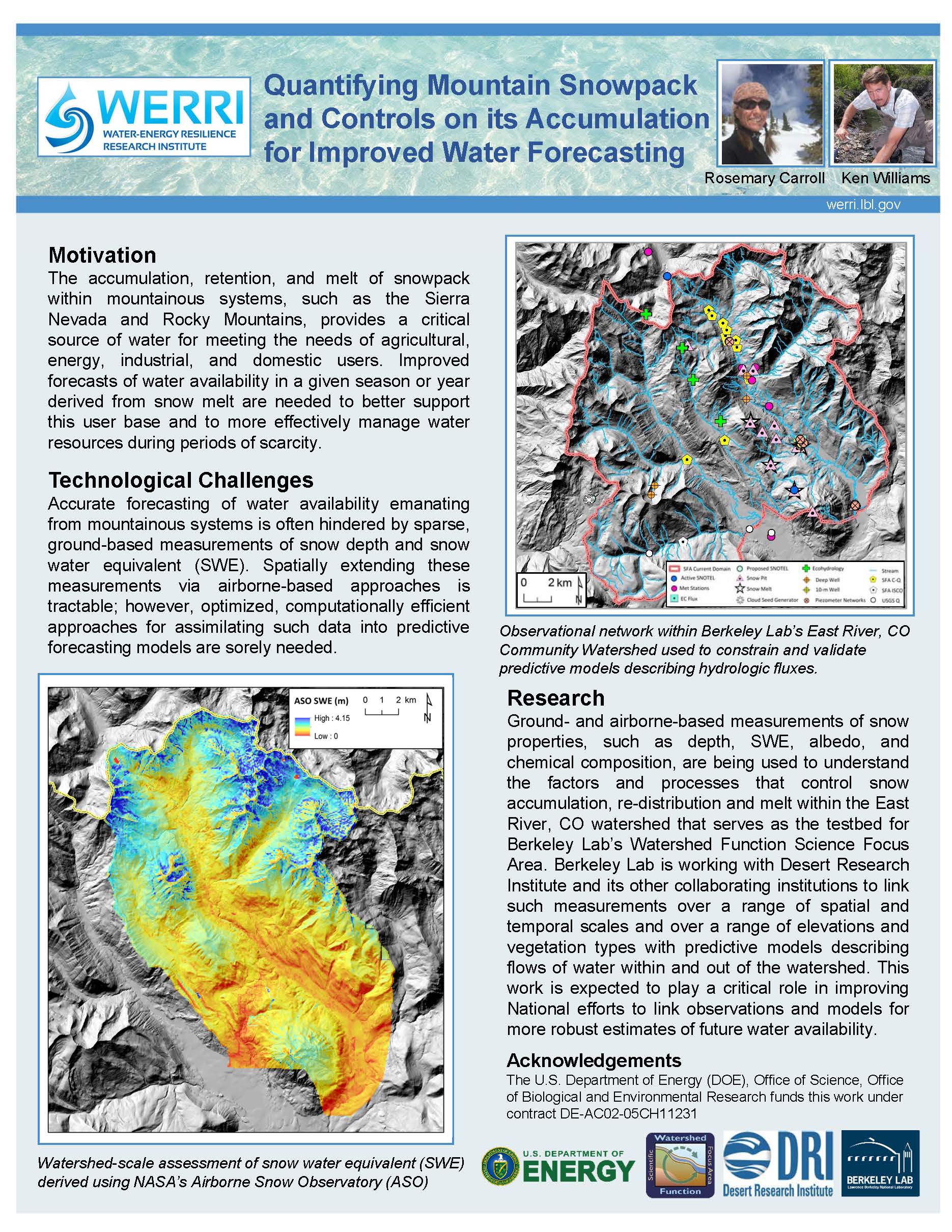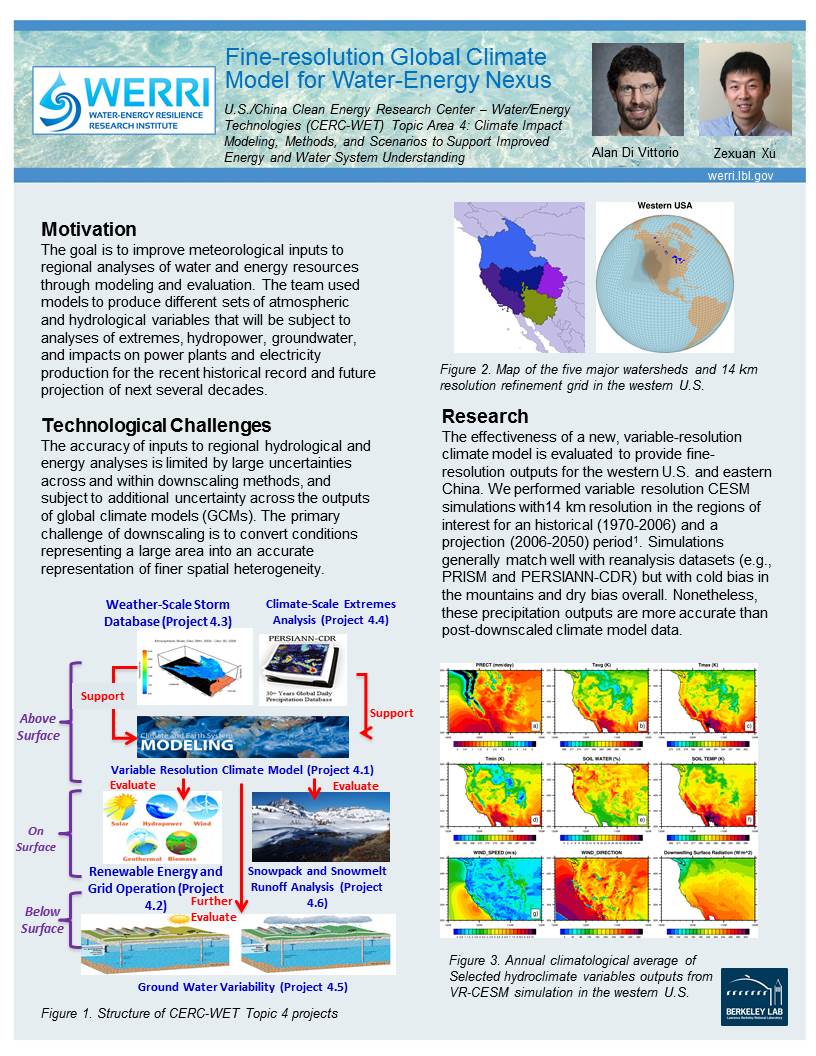Unpredictability in the quantity and quality of surface water resources leads to significant uncertainty for diverse downgradient users, and requires water utilities to invest in expensive treatment systems designed for “worst case scenarios.” Using state-of-the-art climate and weather modeling, and coupled climate–land use–subsurface measurements and models, WERRI researchers are developing capabilities to accurately predict downstream water quantity and quality in a watershed, as it responds to climate perturbations. This gives utility managers the ability to adopt lower cost, flexible treatment strategies, and allows land use planners the ability to forecast water quality impacts on development.
- Quantifying Mountain Snowpack and Controls on its Accumulation for Improved Water Forecasting (Rosemary Carroll, Ken Williams)
- Fine-resolution Global Climate Model for Water-Energy Nexus (Alan Di Vittorio, Zexuan Xu)




